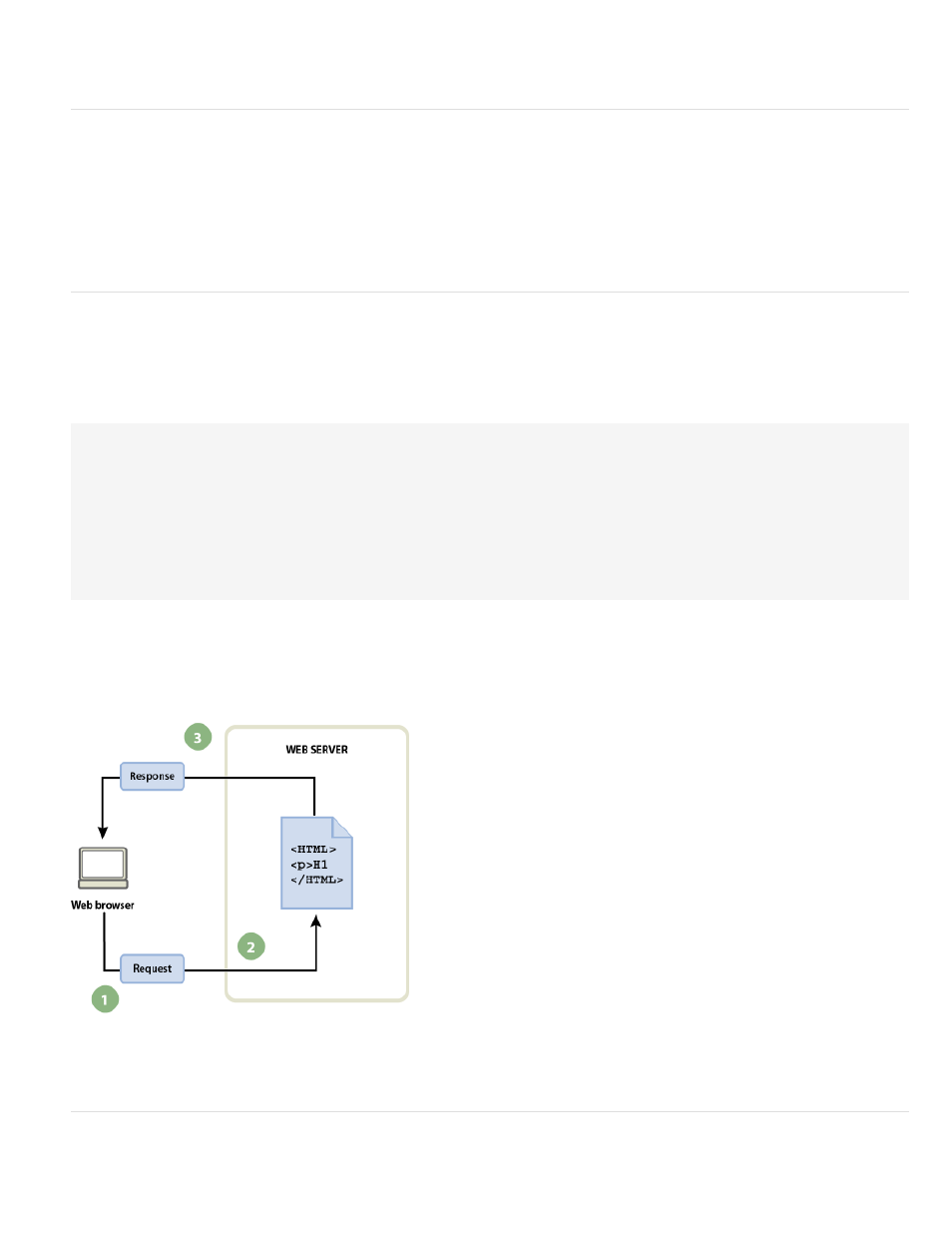How a web application works, Processing static web pages, Processing dynamic pages – Adobe Dreamweaver CC 2014 v.13 User Manual
Page 653

Janet gets the application up and running before lunchtime using Dreamweaver, which has the tools she needs to build this kind of
application quickly and easily.
How a web application works
A web application is a collection of static and dynamic web pages. A static web page is one that does not change when a site visitor requests it:
The web server sends the page to the requesting web browser without modifying it. In contrast, a dynamic web page is modified by the server
before it is sent to the requesting browser. The changing nature of the page is why it’s called dynamic.
For example, you could design a page to display fitness results, while leaving certain information (such as employee name and results) to be
determined when the page is requested by a particular employee.
The next sections describe how web applications work in greater detail.
Processing static web pages
A static website comprises a set of related HTML pages and files hosted on a computer running a web server.
A web server is software that serves web pages in response to requests from web browsers. A page request is generated when a visitor clicks a
link on a web page, selects a bookmark in a browser, or enters a URL in a browser’s address text box.
The final content of a static web page is determined by the page designer and doesn’t change when the page is requested. Here’s an example:
<html>
<head>
<title>Trio Motors Information Page</title>
</head>
<body>
<h1>About Trio Motors</h1>
<p>Trio Motors is a leading automobile manufacturer.</p>
</body>
</html>
Every line of the page’s HTML code is written by the designer before the page is placed on the server. Because the HTML doesn’t change once
it’s on the server, this kind of page is called a static page.
Note: Strictly speaking, a “static” page may not be static at all. For example, a rollover image or Flash content (a SWF file) can make a static
page come alive. However, this documentation refers to a page as static if it is sent to the browser without modifications.
When the web server receives a request for a static page, the server reads the request, finds the page, and sends it to the requesting browser, as
the following example shows:
1. Web browser requests static page. 2. Web server finds page. 3. Web server sends page to requesting browser.
In the case of web applications, certain lines of code are undetermined when the visitor requests the page. These lines must be determined by
some mechanism before the page can be sent to the browser. The mechanism is discussed in the following section.
Processing dynamic pages
When a web server receives a request for a static web page, the server sends the page directly to the requesting browser. When the web server
646